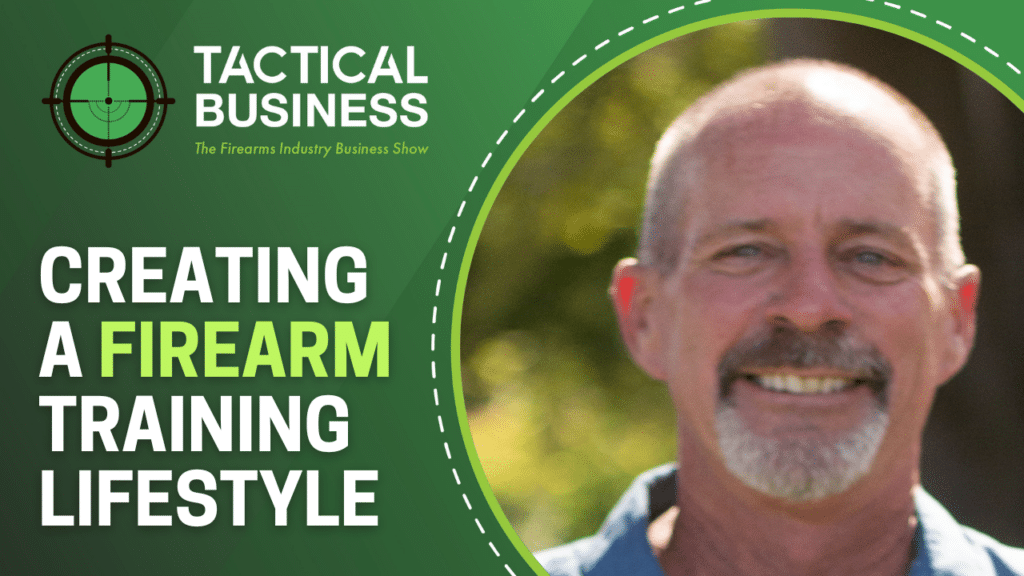About This Episode
In today’s episode of Tactical Business, host Wade Skalsky sits down with Woody Morrisson of VC Firearms Training, a firearms instructor with a unique, laid-back teaching style tailored to individual needs—especially women looking to defend themselves. Woody shares his journey from offering free training to building a niche “lifestyle business” that prioritizes personalized instruction over large, one-size-fits-all classes.
Insights In This Episode
- Southern California’s political diversity shows—even in one state, gun attitudes vary widely.
- No military/LE background? Woody’s laid-back teaching style proves command authority isn’t everything.
- His approach is flexible, part-time, and focused on quality over mass profit.
- The majority of his students are women aged 40-80 seeking home defense training.


Today’s Guest
Woody Morrisson | VC Firearms Training
VC Firearms Training provides professional, personalized firearms instruction in Ventura County, California. Founded by experienced instructors, the company offers CCW courses, beginner training, and advanced tactical classes tailored to individual needs. With a focus on safety, confidence, and real-world skills, VC Firearms Training serves both new shooters and seasoned gun owners. Their certified instructors emphasize practical techniques in a supportive, judgment-free environment. Whether for self-defense or sport, they equip students with the knowledge and proficiency to handle firearms responsibly.
Featured on the Show

About Tactical Business
Tactical Business is the weekly business show for the firearms industry. The podcast features in-depth interviews with the entrepreneurs, professionals and technologists who are enabling the next generation of firearms businesses to innovate and grow.
Episode Summary
Building a Lifestyle Firearm Training Business
From Volunteer to Professional Instructor
Woody Morrisson, founder of VC Firearms Training, shares his journey from volunteering with Project Appleseed (a program combining rifle training with Revolutionary War history) to becoming a certified firearms instructor. His passion for teaching led him to transition from offering free lessons to establishing a professional, insured training business—especially after noticing a demand from women seeking self-defense skills.
A Unique Teaching Style for a Niche Audience
Unlike traditional military or law enforcement instructors, Woody’s approach is laid-back and conversational, influenced by his background as a scuba instructor. Key aspects of his method include:
- Smaller, personalized clinics over large, one-size-fits-all classes.
- Focusing on individual skill levels, particularly for women (40–80 years old) learning home defense.
- Encouraging questions and dialogue instead of rigid, command-based instruction.
The “Lifestyle Business” Model
Woody’s training business is intentionally small-scale and flexible, fitting his life rather than dominating it. Highlights include:
- No brick-and-mortar overhead—he teaches at private ranges and tailors sessions to student needs.
- Prioritizing quality over profit, leading to strong repeat clientele.
- Collaboration over competition with local gun stores and instructors, emphasizing community growth.
Common Mistakes New Shooters Make
Woody identifies the top three issues he corrects most often:
- Trigger control (85% of accuracy issues).
- Using a revolver grip on semi-autos (a habit from older training methods).
- Stance problems (especially women leaning back due to discomfort).
The Importance of Gun Fit & Training Consistency
- Avoiding the “pink revolver” trap: Woody urges students to test multiple firearms before buying, as comfort and control matter more than aesthetics.
- “A gun you don’t train with is more dangerous to you.” He recommends weekly practice for six months, then monthly sessions to maintain skills.
Final Thoughts
Woody’s story underscores the value of local, relationship-driven businesses in the 2A community. His success proves there’s room for diverse training approaches, especially those catering to underserved demographics like women seeking empowerment through firearms.
